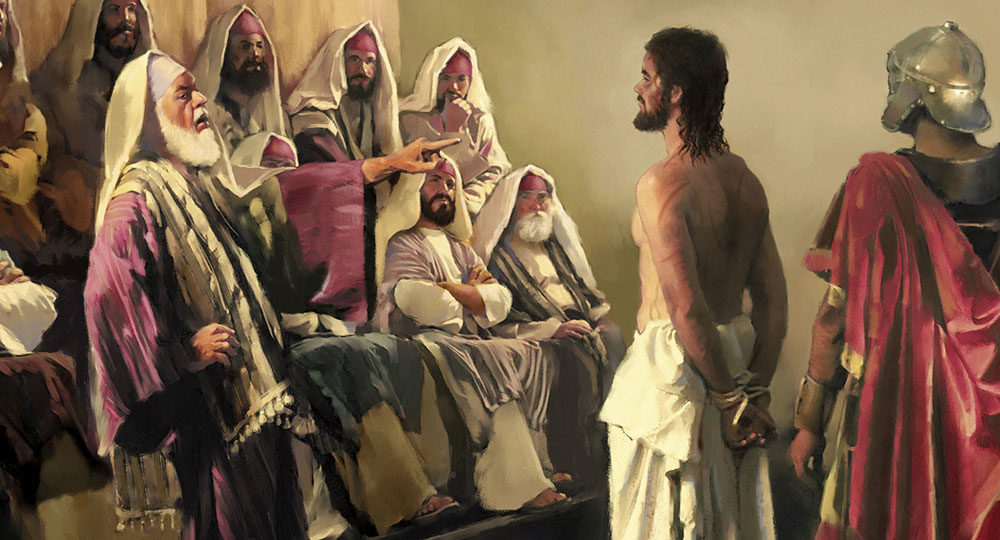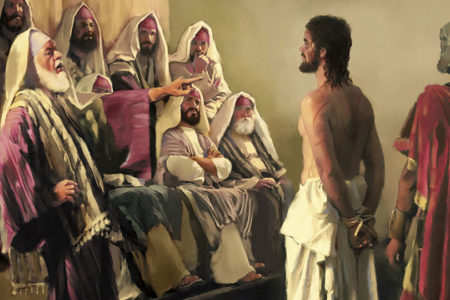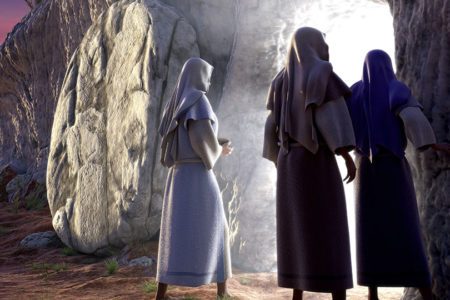The Road to the Cross
Are you ever tempted to doubt God’s love for you? Perhaps you’ve lost a loved one, heard bad news from your doctor, or face some nagging temptation yet again. “God,” you agonize, “if You really love me, how can You allow this to come my way?”
At those moments, it is actually the facts about how much God does love us that can keep us from despair. “He who did not spare His own Son, but delivered Him up for us all, how shall He not with Him also freely give us all things?” (Rom. 8:32). Meditating on Christ’s sufferings actually helps us “know the love of Christ which passes knowledge” (Eph. 3:19) and is an eminently practical way to arm ourselves to trust Him, come what may.
Since the fourth century AD, some Christians have found solace in walking the Via Dolorosa, the “way of suffering” or “painful way,” to remember Jesus’ journey to the cross. This 2,000-foot-long route moves through Jerusalem’s Old City, from the Antonia Fortress near the Temple Mount to the Church of the Holy Sepulchre, the oldest traditional site for the crucifixion and burial. The site of the burial deemed authentic and revered by the vast majority of contemporary, conservative Christians is the Garden Tomb, located near the Damascus Gate.
What really happened on the way to the cross? And how does meditating on Scripture’s truths fortify us with the assurance of God’s unconditional love for us?
The Scriptures about the Via Dolorosa are clear, simple, and yet profound. On the road to the cross, God’s glory was on display; the plan of salvation was being worked out, and the love of Jesus for you and me was demonstrated: “Christ also suffered once for sins, the just for the unjust, that He might bring us to God” (1 Pet. 3:18).
Jesus’ suffering began in the Garden of Gethsemane. It continued through His arrest, the religious and civil trials He was forced to endure, and the inhumane scourging He received at the hands of the Roman soldiers as the Roman prefect, Pontius Pilate, sought to elicit sympathy from the crowds. Then Pilate “delivered Him to them to be crucified” (Jn. 19:16); and “when they had come to the place called Calvary, there they crucified Him” (Lk. 23:33).
The Bible records four main scenes, each of which displays a precious quality about the Lamb of God and His remarkable love for us.
Dependency
Four soldiers formed the standard crucifixion squad. (“Then the soldiers…took His garments and made four parts, to each soldier a part,” Jn. 19:23.) The first stop on the way to Calvary was the courtyard of the Praetorium, or governor’s residence, where the soldiers “gathered the whole garrison around Him” (Mt. 27:27). This probably was the Fortress of Antonia, adjoining the Temple. Even today carvings of ancient Roman games can be found on the courtyard’s pavement.
The 200 or so soldiers of the “whole garrison” decided to have some cruel fun before the serious work of crucifixion began. Notorious for their brutality, they vented their own depravity and hatred for Israel by mocking the “King of the Jews.” They stripped Him, clothed Him as faux royalty with a scarlet robe (likely the discarded cloak of an officer), twisted thorns into a crown (reminding us of the curse of sin on the earth), and gave Him a reed “scepter.”
Then they bowed in mockery with royal greetings; repeatedly spat on Him in contempt; struck His head again and again with the reed, driving the painfully sharp thorns of the crown deeper and deeper into His skull; and slapped Him with their calloused hands. How ironic that these mere creatures were allowed to torment their Creator, the true King of the universe.
Yet, “when He was reviled, [He] did not revile in return; when He suffered, He did not threaten, but committed Himself to Him who judges righteously” (1 Pet. 2:23). Jesus turned Himself over to His Father, trusting that the Judge of all the earth would make things right in the end. The loving Lord Jesus utterly depended on His Father so He could patiently bear the rejection of His own creatures.
Humanity
We do not know how long the mockery continued; but afterward, the march toward execution resumed. Despite His beatings, Jesus started out “bearing His cross” (Jn. 19:17), the 100-pound cross-beam that condemned men carried. However, Scripture says the soldiers conscripted Simon, a Cyrenian entering Jerusalem from the countryside, to finish the task. Clearly, the soldiers who had abused Jesus so cruelly never would have used Simon had there been any possibility that Jesus, staggering from exhaustion, torture, and loss of blood, could have dragged the weight Himself.
Jesus was not a superhuman sufferer. He was exhausted—a true member of humanity, “coming in the likeness of men” and being “obedient to…the death of the cross” (Phil. 2:7–8). The Man of Sorrows experienced the weakness of being human out of love for you and me.
Sympathy
Luke’s Gospel says a great multitude followed Jesus, including women whose hearts were breaking watching Him move toward crucifixion. Amazingly, He turned to them to offer compassionate words of warning:
Daughters of Jerusalem, do not weep for Me, but weep for yourselves and for your children. For indeed the days are coming in which they will say, “Blessed are the barren!…” Then they will begin to say to the mountains, “Fall on us!” and to the hills, “Cover us!”(Lk. 23:28–30).
This was the sixth warning to Jerusalem that Luke recorded from the lips of Israel’s Messiah. Barrenness was considered a curse; but Jesus knew that when the Romans would burn Jerusalem in AD 70 (and when it will be devastated again during the Tribulation), having no children to face such warfare would be a blessing. It would be better to be crushed to death under rocks than face such anguish.
Jesus’ closing question was a maxim to say that if He experienced such suffering undeservedly, more horrible judgment will face those who deserve it: “If they do these things in the green wood, what will be done in the dry?” (v. 31).1
The suffering Prophet, Priest, and King was moved with compassion to pause and issue a prophetic warning, even amid the stress of treading the path to the cross. Oh, how He loves you and me.
Tenacity
Six months earlier Jesus had told the apostles He would be killed. He also said, “No one takes [My life] from Me, but I lay it down of Myself. I have power to lay it down, and I have power to take it again” (Jn. 10:18). Everything about His final months, weeks, and hours showed His absolute commitment to fulfill His Father’s plan as the Lamb of God.
When Jesus finally reached Golgotha, where He would be crucified, He was offered a drink of wine mixed with myrrh or gall, used as a pain-killing sedative. The Jewish Talmud says noble women in Jerusalem used to donate it and bring it to crucifixions.2
“When He had tasted it, He would not drink” (Mt. 27:34). The Messiah was so determined to keep His senses sharp as He paid sin’s price for us that He refused anything that would dull His agony. His love for us was total and tenacious.
The way to the cross was complete. In horrible simplicity, Scripture says, “Then they crucified Him” (v. 35). All along the way, our Savior showed His dependency, humanity, sympathy, and tenacity. The Father was fully glorified by His Suffering Servant.
The next time circumstances tempt you to doubt God’s love for you, get out a Bible and walk beside your Lord on His way to the cross, as He suffered for you. The experience may change your life.
ENDNOTES
- I. Howard Marshall, The Gospel of Luke (Grand Rapids, MI: Eerdmans, 1978), 865.
- Leon Morris, The Gospel According to Matthew (Grand Rapids, MI: Eerdmans, 1992), 715.








Jesus is my saviour, protector, my everything